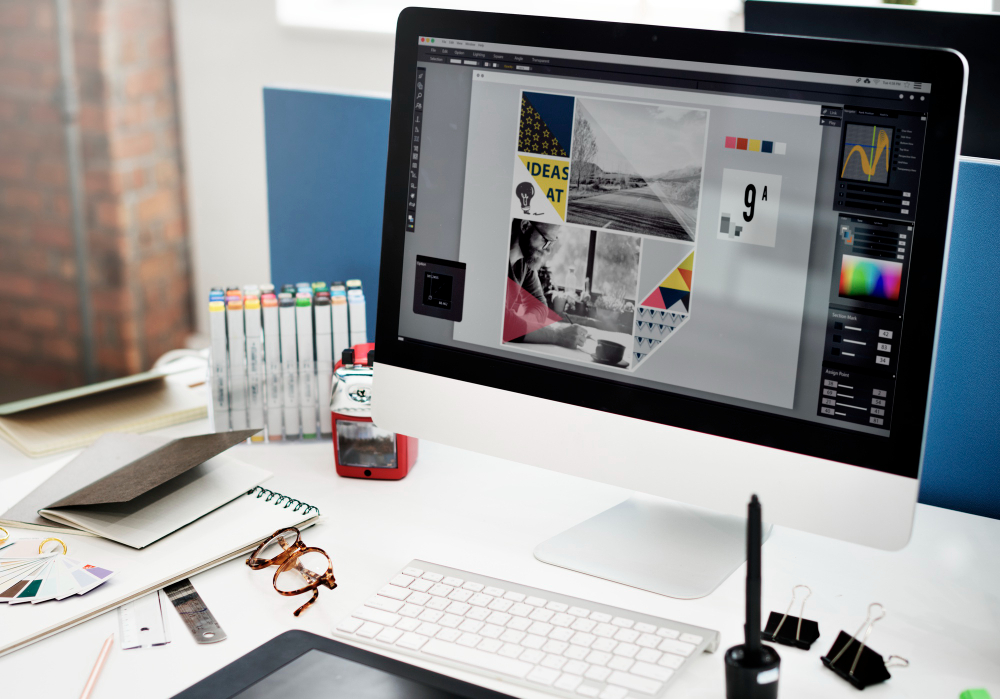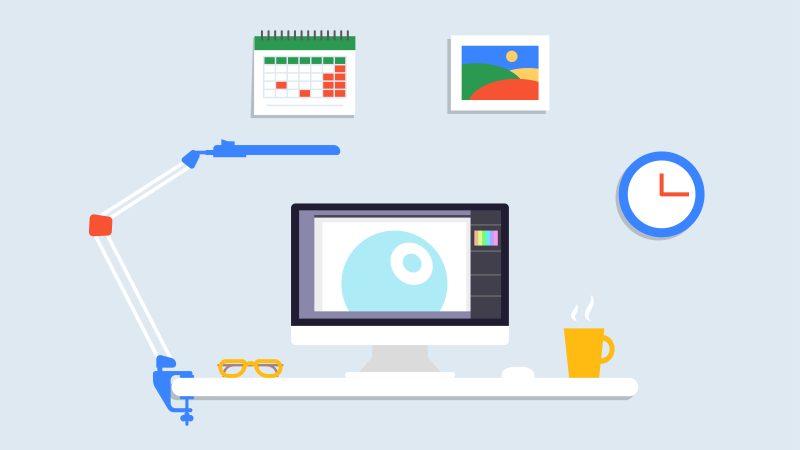Design Unleashed: Exploring the Art of Graphic Design

There is this saying that goes, “Artists are not people who see different things. They just see things differently.” And designers are strangely beautiful artists. When you think they are doing nothing, that’s when they are doing the most important thing – thinking. That’s why creative thinking is at the heart of designing. Designers know that it’s not just about how it looks. It’s also about it it feels to the viewers.
Designs have the power to influence our lives in unexplainable ways. A graphic designer feels responsible for putting life into a design. Taking it beyond a structure of texts and images is their ultimate goal. The art of graphic design is how a simple idea travels through the prototypes, concepts, messaging, emotions, and finally into an aesthetically pleasing picture that speaks volumes.
So, let’s explore graphic design like never before.
What is Graphic Design?
The art and science behind turning ideas in our heads into visual representation is called graphic design. The objective of graphic design is to create eye-catching and morally impactful designs that can change perspectives or lead to an impactful change of thoughts or ideas.
Role of Graphic Design Across Different Domains
- Marketing and Advertising: Graphic design assists in producing visually striking brochures, advertisements, and social media graphics that capture attention and increase sales.
- Branding: Designers create visual components such as color schemes and logos that play a major role in defining a brand’s identity.
- Web Design: Web designers delicately develop the appearance and experience of websites to make them aesthetically pleasing and offer user-friendly browsing experiences.
- Print Media: Graphic design aids in the useful and visually appealing organization of content in magazines, newspapers, and printed publications.
- Product Packaging: By making packages stand out on store shelves, graphic design can affect buyer decisions.
- Entertainment: Graphic design is essential to the entertainment business because it produces eye-catching promotional materials, such as movie posters and video game covers.
The Creative Process of Graphic Design
The path a design traverses from the imagination of a graphic designer to a computer screen or paper is called the creative process. There are basically four steps involved in this process.
- Imagination and Ideation: As a designer, you have to picture an idea in your mind about how the design should look at the end. You must think and think for hours to draw rough imagery on paper or digital tools.
- Designers are naturally gifted problem-solvers. They usually keep asking themselves relevant questions like “How can this message be conveyed?”, “What can I do to make people remember this brand?”, and more.
- Creativity is iterative. You have to make multiple attempts just to put one puzzle together. It will also remove any chances of error and bring out the perfect design.
- Feedback is key in crafting the final product. Take perspectives from the top people in command. For example, if you are planning to run a campaign, you need to consult with your marketing manager or head designer. You can also ask for your client’s perspective.
Design Tools and Software
There is an abundance of design tools available on the internet – free and paid. These tools and softwares are helpful to graphic designers in producing world-class graphics of all kinds.
Here, we are going to talk about the top design tools and their uses so that you can have a fair idea before choosing them.
- Adobe Creative Cloud (Adobe CC)
- Adobe Photoshop: one of the best image editing tools out there.
- Adobe Illustrator: best for vector graphics and logo designing
- Adobe InDesign: best for printing brochures, magazines, books, etc.
- Adobe XD: useful in designing website and app prototypes centering on UI and UX.
- Adobe Premiere Pro: best used for video editing.
- Adobe After Effects: best for creating visual effects in videos.
- Canva
Canva has grown into a power-packed image and video editor platform because of its ease of access and availability of thousands of customizable templates.
- CorelDRAW
CorelDRAW is mostly used for illustration and logo design because of its accuracy.
- Affinity Designer
For a one-time fee, you can have a less-costly Affinity Designer instead of Adobe Illustrator for vector graphics and have more functionality as well. It is highly popular on iOS platforms.
Color Theory in Graphic Design
Colors in designs are mood-setters because of their aesthetically pleasing nature. Every color has an emotion behind it. You can convey feelings and ideas and set the tone with the help of the right colors in your designs.
Here are a few reasons why colors are an important aspect of a design.
- Colors create an instant visual impact. They can make a brand memorable for you. For example, Red is for Coca-Cola, and Blue is for Pepsi.
- Every color has a psychological impact behind it. They form an emotional connection. For example, Red is for desire, and Blue is for trust.
- Colors create a brand identity due to their consistent use across all marketing channels and spread out in all types of content mediums.
- Colors can be helpful in communicating information in the form of numerical data. For example, maps use colors to show different variations in a climatic region.
- Colors ascertain consistency due to a systematic approach to designing different marketing materials like logos, web pages, landing pages, social media posts, etc.
Layout and Composition in Graphic Design
Layout and composition are other crucial steps in creating the final design. These things decide the placement of your design elements. They are more in sync with human psychology because of how the eyes meet a design. There are three aspects to it.
- Rule of Thirds principle
The intention is to draw two sets of equidistant lines horizontally and vertically. This will divide your design into 9 equal parts, very similar to a tic-tac-toe game. Now, let symmetry guide you toward how to place certain elements in your design. Balancing is the art here.
- Grid Systems offer structure to your design.
With grids, you can be sure that the print design has all the elements of your design intact. You don’t want to end up truncating an important aspect of your design by placing it at the ends.
- Get the right balance in your design.
Symmetry is achieved through the positioning of your elements proportionately. While asymmetrical distribution includes the size, color, contrast, etc., of your elements.
Key Takeaways
To master the art of graphic design, your imagination, as well as your artistic hands, should be at the helm of all the talking. You should not just be good with the tools but also carry a problem-solving mentality. And after learning these technicalities that we discussed in this article, nothing can stop you from achieving your design goals. I hope you found what you were looking for.





